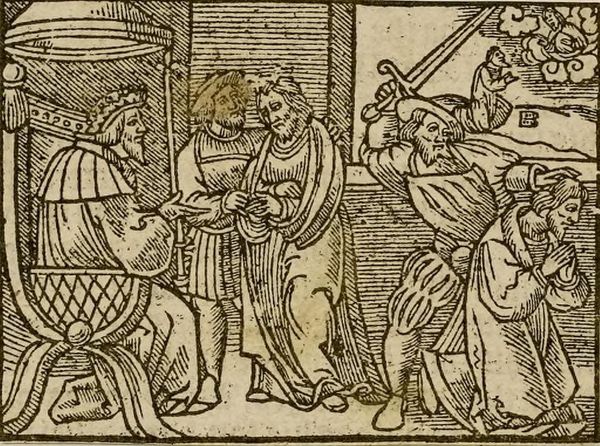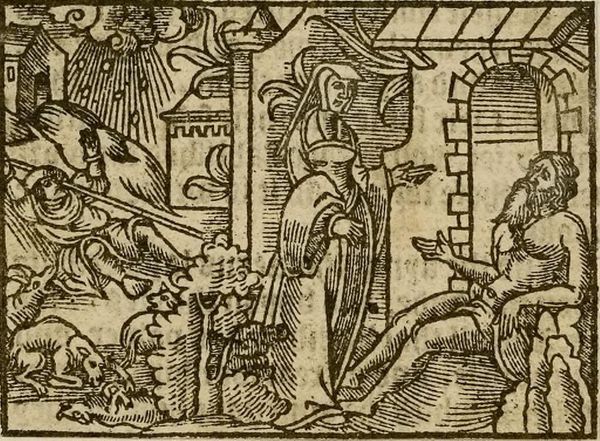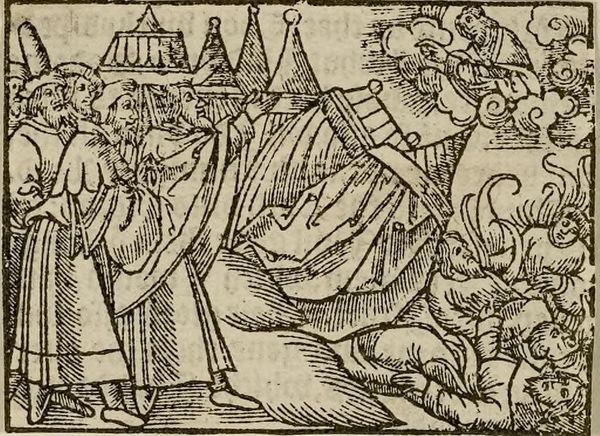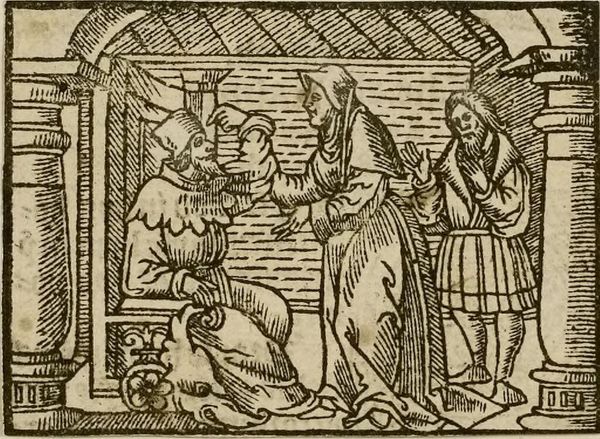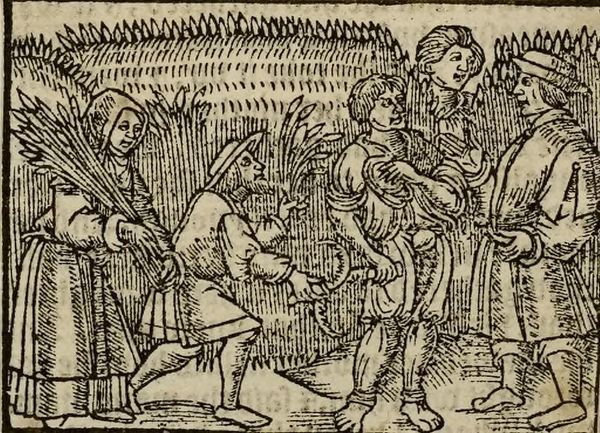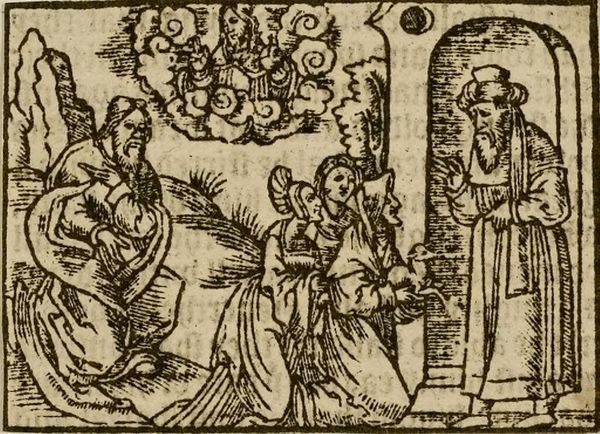
Illustration XXI: On his death bed, Jacob blesses Joseph's sons Ephraim and Manasseh (Genesis 48) c. 16th century
0:00
0:00
Copyright: CC0 1.0
Curator: My first impression of this woodcut is its somber, yet powerful mood. The high contrast and dense linework emphasize the weight of the scene. Editor: This anonymous piece, titled "Illustration XXI: On his death bed, Jacob blesses Joseph's sons Ephraim and Manasseh (Genesis 48)," presents a pivotal moment. What is its social significance? Curator: Well, the act of blessing is a performative one. It reinforces patriarchal structures and generational legacy. The positioning of Jacob in bed, elevated, underscores his authority, even in a vulnerable state. Editor: And how might the context of religious imagery affect its reception by different audiences throughout history? Does the blessing take on new meanings when viewed through diverse religious perspectives? Curator: Absolutely. The image becomes a site where religious identity, power dynamics, and cultural values intersect and are potentially renegotiated. Editor: It makes you wonder how the artist felt about the blessing, what their life was like, and how they may have been impacted by the power of the church. Curator: Precisely, by analyzing its historical context and contemporary interpretations, we can uncover its complex layers of meaning. Editor: A valuable lesson in how art reflects society and how society interprets art.
Comments
No comments
Be the first to comment and join the conversation on the ultimate creative platform.
